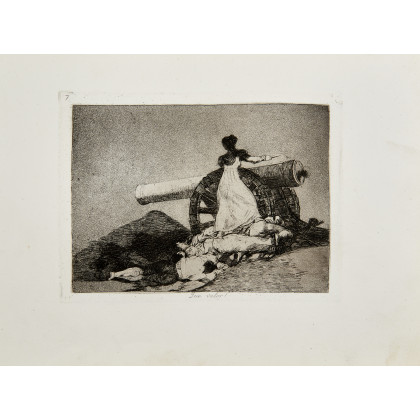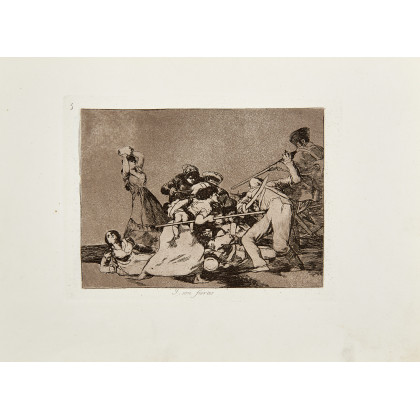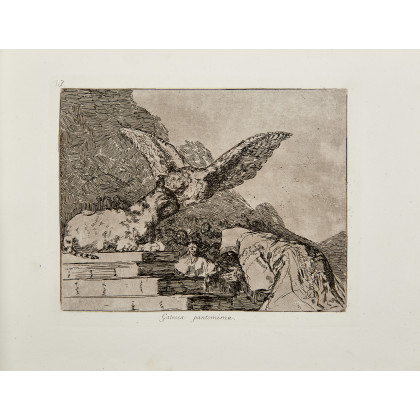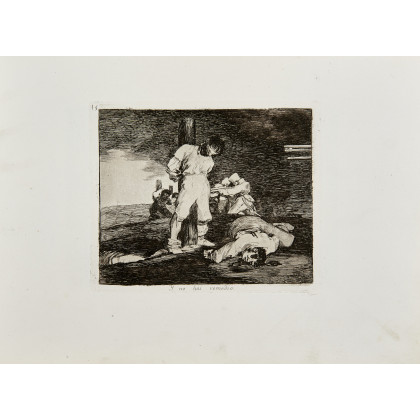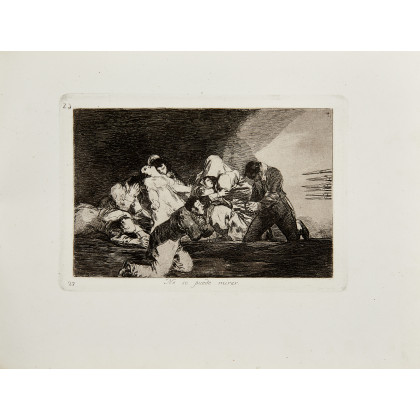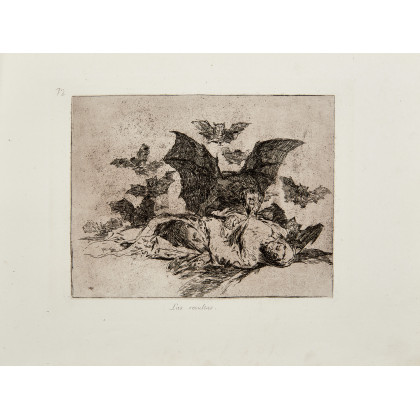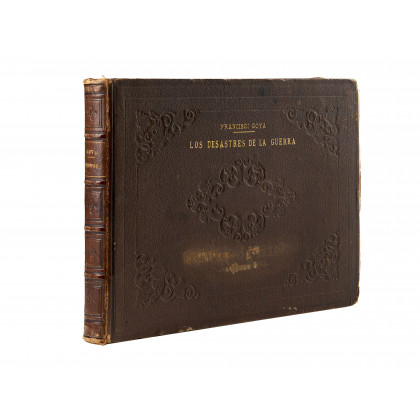
Lot n° 47 | Auction 724
GOYA Y LUCIENTES, Francisco José (1746-1828)
Estimate € 12,000 - 18,000
Auction: 30 September 2025 at 15:00
GOYA Y LUCIENTES, Francisco José (1746-1828)
Los desastres de la guerra. Madrid: Laurenciano Potenciano per la Real Academia de Nobles Artes, 1863. First edition and second issue, complete with the 80 engravings in excellent condition and with the corrected titles on plates 9, 32, 33, 34, 35, 36, 39, and 47 (Harris 1b). Created between 1810 and 1820, the engravings depict with impressive intensity and rawness the devastation of the Spanish rural areas during the Napoleonic Wars and the suffering of the people of Madrid during the subsequent famine. At the very beginning of the conflict, in 1808, the Spanish general Palafox (1775-1847) invited the artist to go to Zaragoza, which had put up fierce resistance to the siege by the French army. It is likely that the first set of engravings, depicting violence against civilians, battle scenes, executions, rapes, and mutilations, dates from this period: plates 20, 22, and 27 bear the date 1810. The subsequent group portrays the famine that struck Madrid in 1811-1812, while the final recall the renowned grotesque and allegorical motifs of the Caprichos to satirize the repressive regime of Ferdinand VII (1784-1833). The artist never saw a definitive and complete edition of the work: during the authoritarian rule of Ferdinand, which in 1824 led him to emigrate to France, he abandoned any plans for publication, presumably fearing censorship. The plates were kept by his son, Javier Goya (1784-1854), until his death, and were then purchased by the Real Academia de San Fernando in 1862. For this present first edition, one of the only two complete collections printed during the artist's lifetime was used as a reference, namely the one he had donated to Ceán Bermudez (1749-1829), his dear friend and art critic. The Real Academia then had a total of 500 copies printed in 1863. The scenes depicted in the engravings were inspired by specific events and were closely tied to the artist's personal experience, as evidenced by the title of plate 44, "Yo lo vi". However, despite the historical context of the time, Goya's work took on a universal dimension as a testament to human suffering and had a significant influence on later artists who dealt with the theme of war. Harris, II, pp.173-174, 1b. Oblong 4to (235 x 325mm). Lithographic title, one sheet of biographical text, 80 numbered plates in etching, aquatint, drypoint and lavis on strong paper, 29 of which bear "J.G.O." watermark, palmette or both (first leaves detached, some loose gatherings, occasional soiling and light browning, some light marginal spotting). Contemporary percalline later rebacked, gilt author and title on rear cover, blindstamped decorations on covers, gilt title and blindstamped decorations on spine, decorated endpapers (abrasion on rear cover, rear cover and spine detached from text block, light rubbing especially to extremities).
Estimate € 12,000 - 18,000

